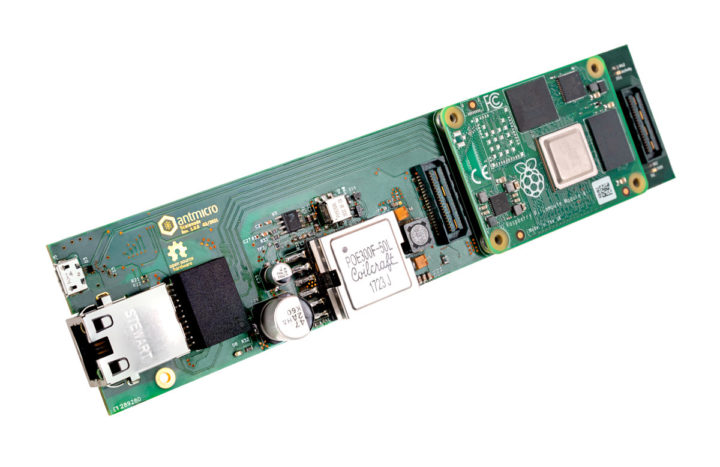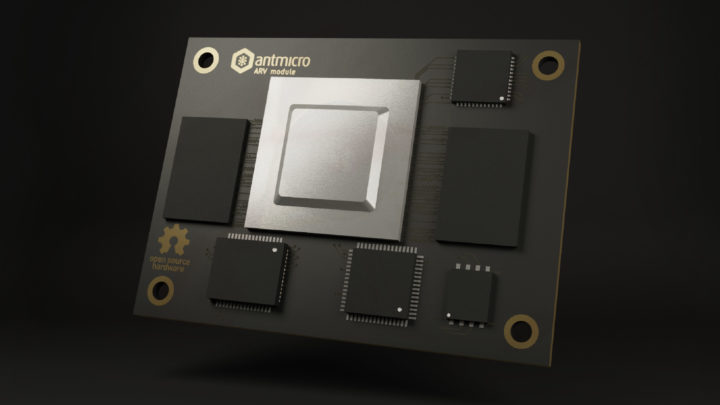The Linux capable BeagleV SBC, now called “BeagleV Starlight”, was announced last January with a StarFive JH7100/JH7110 64-bit RISC-V processor, and developers and beta users have just started to get their hand on the board in recent days.
But there’s another StarFive JH71x0 hardware in the works with Antmicro ARVSOM. The system-in-module will feature the dual-core RISC-V processor, and be compatible with Raspberry Pi CM4, and by extension Antmicro’s Scalenode server-oriented baseboard.
The company did not provide the complete specifications for the module, but based on public information available, Antmicro ARVSOM should feature the following:
- SoC – StarFive JH7100 Vision SoC:
- RISC-V U74 dual-core with 2MB L2 cache @ 1.5 GHz
- Vision DSP Tensilica-VP6 for computing vision
- NVDLA Engine 1 core (configuration 2048 MACs @ 800MHz – 3.5 TOPS)
- Neural Network Engine (1024MACs @ 500MHz – 1 TOPS)
- VPU – H.264/H.265 decoder up to 4Kp60, dual-stream decoding up to 2Kp30
- JPEG encoder/decoder
- Audio Processing DSP and sub-system
- System Memory – Up to 8GB LPDDR4
- Storage – TBD
- 2x 100-pin board-to-board connectors with a pinout (at least partially) compatible with Raspberry Pi CM4
- Supply Voltage – 5V
- Dimensions – 55 x 40 x 4.7mm with 4x M2.5 mounting holes
Note we were just informed that BeagleV and ARVSOM will first ship with the JH7100 dual-core RISC-V processor, it will eventually be upgraded to JH7110 quad-core U74 RISC-V processor with Imagination Tech IMG BXE-4-32 GPU, and PCIe support.

Up to 18 Scalenode boards can be installed in a 1U rack to build continuous integration systems, or custom, open-source hardware & software-based systems for edge AI applications. ARVSOM should also be compatible with any other Raspberry Pi CM4 baseboard, especially once the JH7110 model comes out with PCIe and graphics acceleration.
Further information can be found in the announcements for the module and the baseboard.

Jean-Luc started CNX Software in 2010 as a part-time endeavor, before quitting his job as a software engineering manager, and starting to write daily news, and reviews full time later in 2011.
Support CNX Software! Donate via cryptocurrencies, become a Patron on Patreon, or purchase goods on Amazon or Aliexpress





